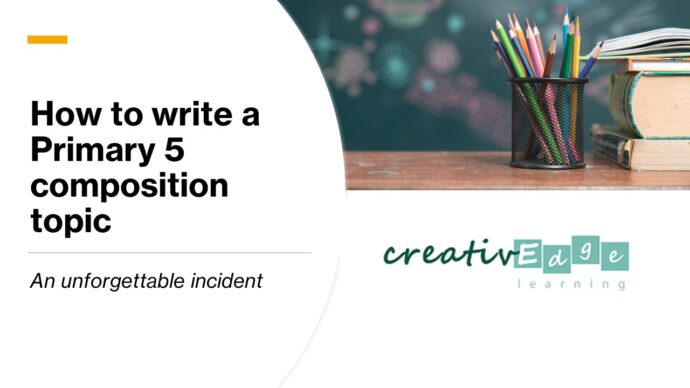
Primary 5 composition topic – Introduction
In one of our previous posts, we highlighted the common titles for the Primary 5 composition exam. Today, we are going to use a model sample to illustrate how to write a story for a Primary 5 composition topic as according to exam requirements.
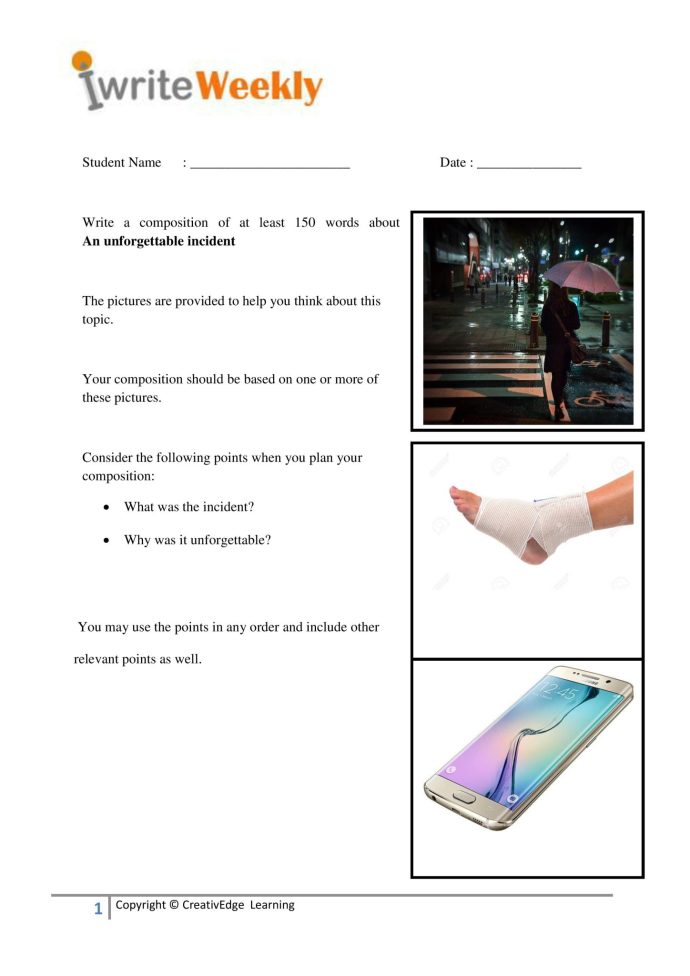
Point (1) – Begin with a flashback introduction paragraph
A flashback introduction begins the story by using a scene which reminds the main character of the incident.
When writing a Primary 5 composition topic , this is the most commonly-accepted beginning. It is important to note that this beginning can be used at the Primary 6 level too.
To learn how to write an effective flashback introduction, refer to our post on the 4 steps to write an effective flashback introduction.
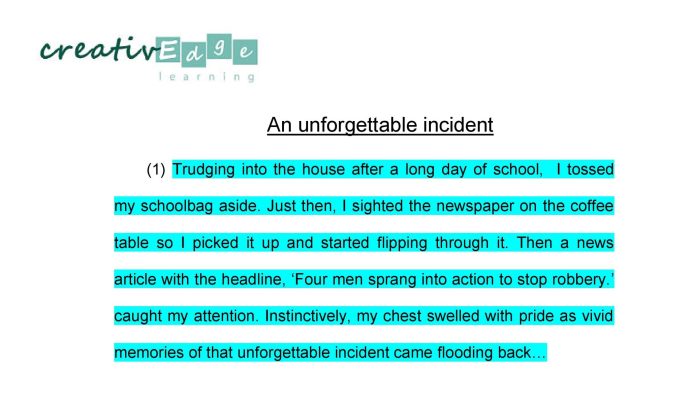
Point (2) – Begin the incident with the introduction
The story should start with an introduction which clearly states where and what the main character was doing at the start of the story.
This gives the reader a good idea of the background of the story.
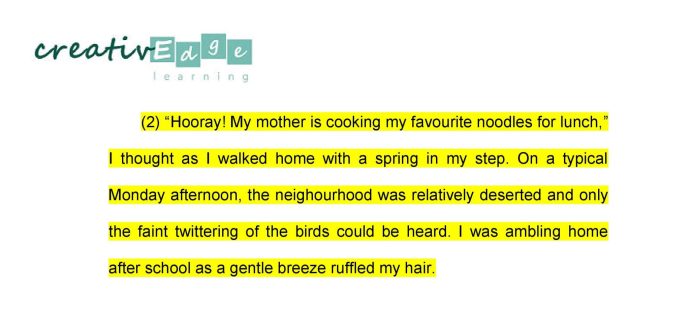
Point (3) – Continue with the rising action
The rising action describes the scene leading to the climax (or main event).
Often, it introduces important secondary characters which refers to characters who play a significant role in the story.
In this case, the victim of the robbery is introduced in the rising action.
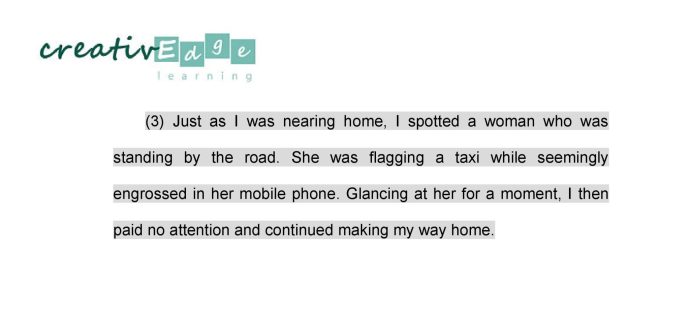
Point (4) – Building suspense
For certain storylines which focus on action, pupils can create excitement leading to the main event by adding suspense.
To create suspense, it is necessary to decide the following details :
- Appropriate sensory clues
- The main character’s thought , action and feeling
- The discovery made by the main character and the resulting decision
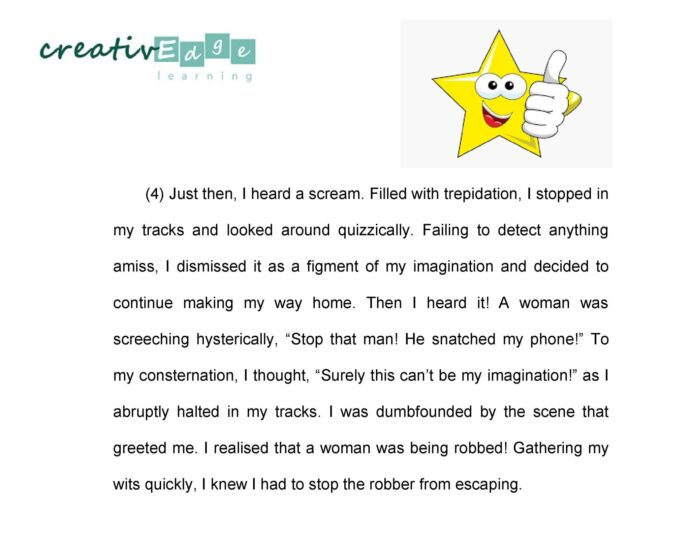
Point (5) Main Event (also known as the climax) and Additional Complication
The main event are the most exciting or memorable scenes of the story. It is also known as the climax and forms a major part of the story.
As the main event is extremely important, pupils must fully expand the scenes which form the main event with the following elements:
- Descriptive action using specific verbs and adjectives
- Strong feelings of the main character and important secondary characters
- Engaging thoughts of the main character
- Meaningful speech
At the Primary 5 level, pupils should include an additional complication (a minor twist) whenever possible. This creates additional content for the main event.
Refer to the section in red for the additional complication.
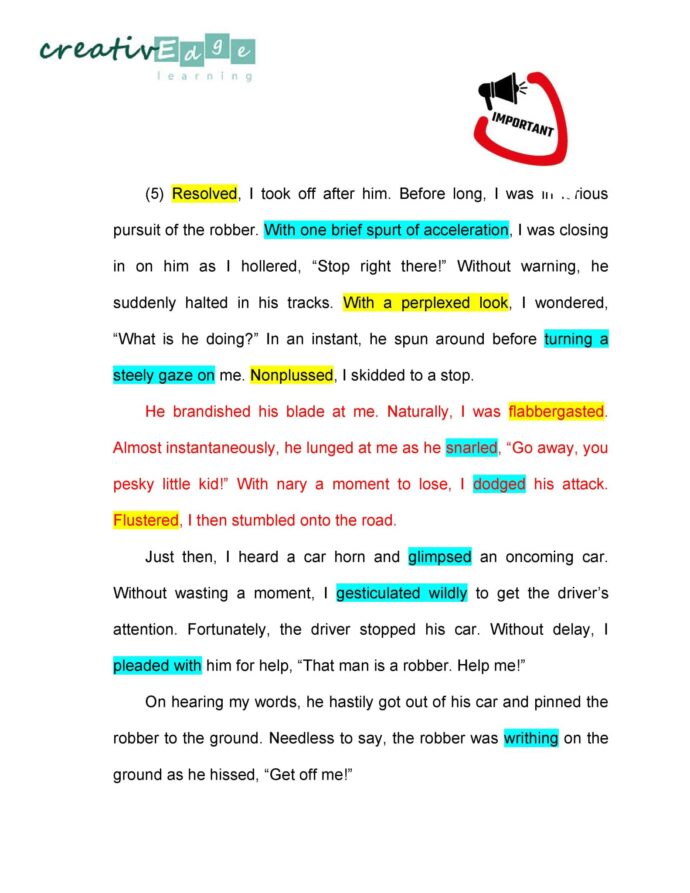
Point (6) Solution
A solution (also known as the resolution) narrates the end of the incident.
It clearly states what happened to the main character as well as the important secondary characters in the story.
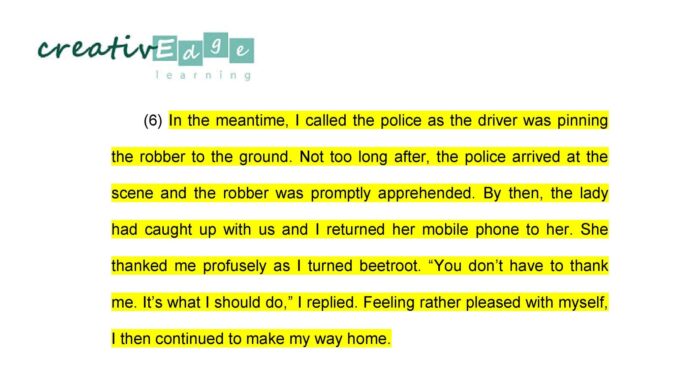
Point (7) Conclusion
A conclusion ends the story with the main character looking back on the incident and reflecting on the incident.
As stated in our previous post on rules to follow when writing a conclusion, it is also necessary to insert the title in the conclusion.
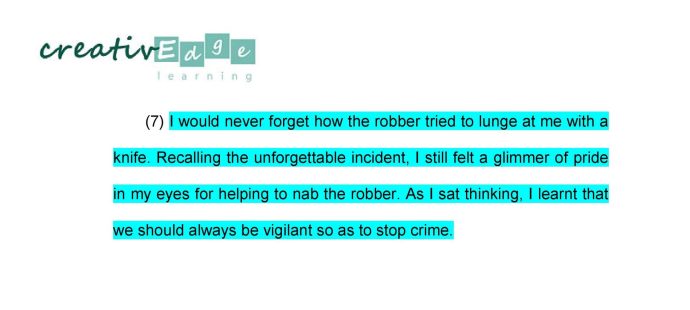
Point (8) Flashback Conclusion
A flashback introduction can be accompanied by a flashback conclusion at the end of the story.
A flashback conclusion serves to “pull” the main character back to the current past after recounting the incident.
To learn how to write a flashback conclusion, refer to our previous post on different types of conclusions.
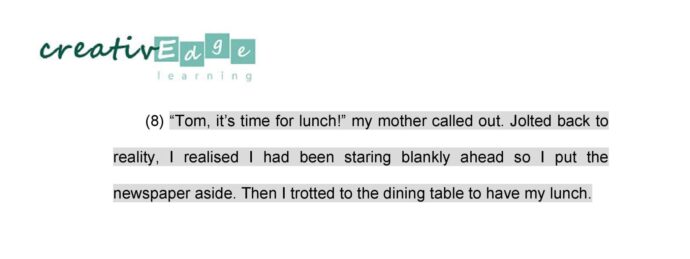
To learn how to write mark-scoring compositions in a step-by-step process, come along for the tryout lessons for our Primary 5 and Primary 6 writing classes to find out more.
Call us today to find out more about our writing programme.



